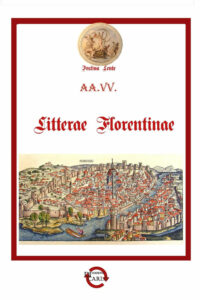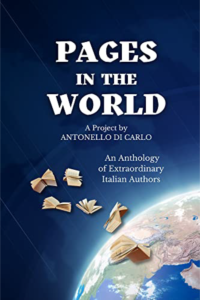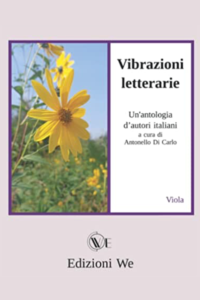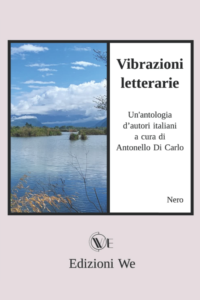Anthologies
We often live without thinking that nothing is permanent: history teaches us.

Litterae Florentinae
Anthology edited by Antonello Di Carlo
Far be it from me, with this high-sounding title, to dust off an idea of the Renaissance linked to the past of Florence, as if it were the panacea for whatever is done today. I think that the Renaissance was a precious treasure, which left us a legacy of wonderful works. It's like a treasure chest from which to take out what we need. Certainly this has been true for a long time but, as happens with all treasures, even enormous ones, sooner or later we will find the chest empty. The Renaissance is the fruit of ingenuity, of inventiveness, of the ability that man possesses to give substance to dreams, to ideality. The men made like this are finished and only the vestiges remain. Without men and ideas, without that important drive towards ideality, everything remains suspended in time and space, unable to communicate the inspiration that generated such wonders. Thus, Florence began its decline because it was unable to valorise the men who knew how to look beyond what was happening around them, not grasping the modernity that they announced with their lives and their works.
The past would have acted as a springboard for the city to face a new "renaissance", this time not only made up of works of art in search of beauty that would take your breath away. But of men and ideas who looked ahead, designing a future that was to come. Grasping the signs, the tensions, making them our own, meant giving life to a new conscience, a new self-awareness, within those furrows that life itself proposed to us and which would have marked a viable path for the renaissance of consciences, of an increasingly necessary morality and ethics. We only realize this today.
So, when the idea of this anthology was born, the result of the international literature and poetry competition Litterae Florentinae, it came naturally to us to think of Scandicci, the place where, in the splendid setting of the Abbey of San Salvatore e Lorenzo a Settimo, he is buried the “cursed” poet Dino Campana.
Of course we don't think of emulating his verses with these writings, also because each writer is the fruit of his era, of his time, of his experience. We simply wanted a reference light that could illuminate our path to some extent. So we collected the writings in a volume to create this beautiful anthology: Litterae Florentinae, rich in content and ideas that project yesterday's thinking into today, making it accessible. What you find in your hands is not a Renaissance treasure chest, but rather a small jewel that contains poems, stories, the result of the commitment of poets and poetesses who firmly believe in a new era in which dreams become reality, in which writing, culture, carry within themselves the living and profound seed of a renaissance of consciences, of a history that does not stop and continues to the present day, projecting us into the shrine of the soul of those who wrote these texts.

Pages in
the World
Anthology edited by Antonello Di Carlo
The teleological aspect of writing is not a simple linguistic exercise. It is an excellent intercultural bridge because the "knowledge" of people can only be achieved through the tool of sharing. Only in this way can the written word reach every corner of the earth, overcome the highest mountains, the vastest oceans, and become everyone's heritage. Poems and stories can be more or less beautiful, more or less interesting. However, it is not their spatial and temporal collocation that determines their evolutionary genesis because words, true words... the words of the soul, have no time, no space, since they carry with them the sense of memory and knowledge. Writing is a cure for the soul and the most powerful tool for dialogue. Through a correct and functional translation, the author can make his soul known and express his feelings, managing to make himself understood by everyone. I'm a bit like the painter who, with the help of his brushes, creates and expresses everything that the represented image manages to convey. When inspiration strikes, the writer does the same: he begins to weave his beautiful tapestries, using only a pen and a blank sheet of paper. And, speaking of tapestries, it is my humble but convinced opinion that “Pagine nel mondo” and each of its over 700 pages, has been superbly “woven” by truly expert word weavers”.

Literary Vibrations
Purple
Anthology edited by Antonello Di Carlo

